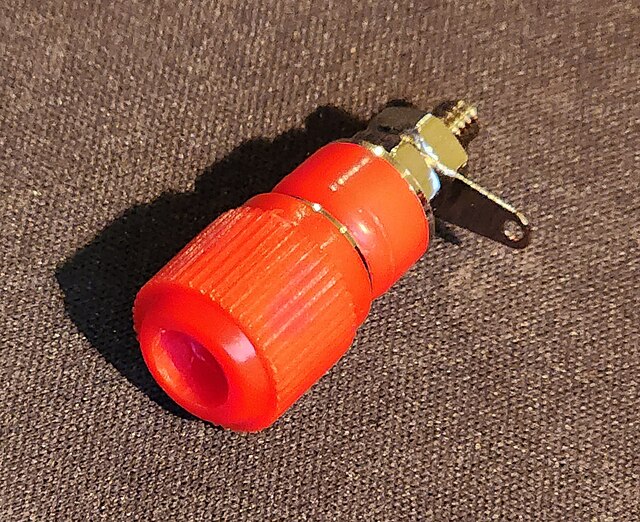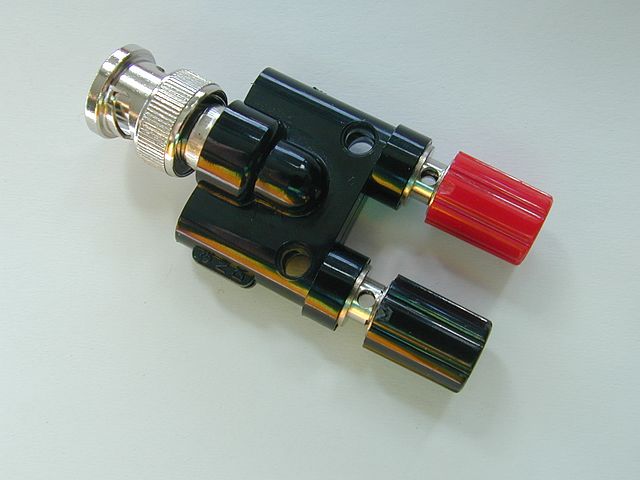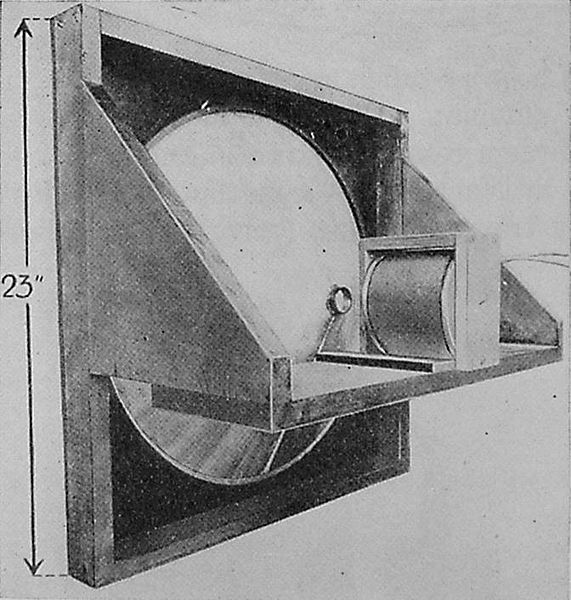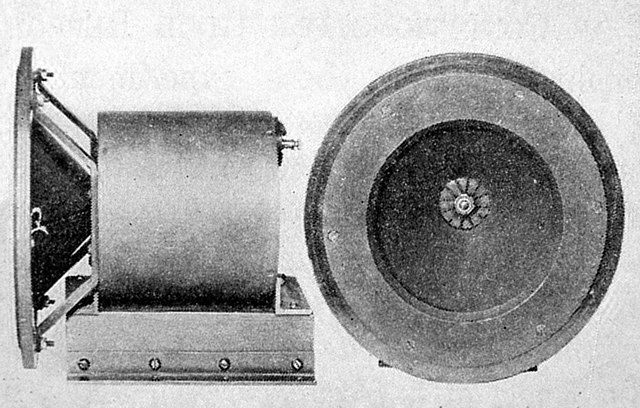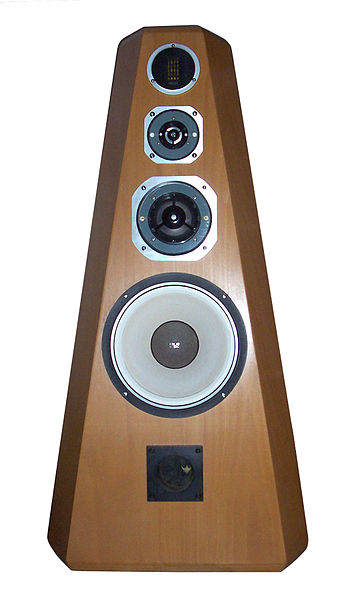A binding post is a connector commonly used on electronic test equipment to terminate (attach) a single wire or test lead. They are also found on loudspeakers and audio amplifiers as well as other electrical equipment.
A binding post, colored red, which usually indicates a positive terminal.
Two insulated, color-coded binding posts at the bottom center of a historical signal generator; modern devices often have bandwidths exceeding the utility of such connectors
Adapter between five-way binding posts and a male BNC connector
Uninsulated binding posts on a loudspeaker connected to banana plugs
A loudspeaker is an electroacoustic transducer that converts an electrical audio signal into a corresponding sound. A speaker system, also often simply referred to as a speaker or loudspeaker, comprises one or more such speaker drivers, an enclosure, and electrical connections possibly including a crossover network. The speaker driver can be viewed as a linear motor attached to a diaphragm which couples that motor's movement to motion of air, that is, sound. An audio signal, typically from a microphone, recording, or radio broadcast, is amplified electronically to a power level capable of driving that motor in order to reproduce the sound corresponding to the original unamplified electronic signal. This is thus the opposite function to the microphone; indeed the dynamic speaker driver, by far the most common type, is a linear motor in the same basic configuration as the dynamic microphone which uses such a motor in reverse, as a generator.

Kellogg and Rice in 1925 holding the large driver of the first moving-coil cone loudspeaker
Prototype moving-coil cone loudspeaker by Kellogg and Rice in 1925, with electromagnet pulled back, showing voice coil attached to cone
The first commercial version of the speaker, sold with the RCA Radiola receiver, had only a 6-inch cone. In 1926 it sold for $250, equivalent to about $3000 today.
A four-way, high fidelity loudspeaker system. Each of the four drivers outputs a different frequency range; the fifth aperture at the bottom is a bass reflex port.

